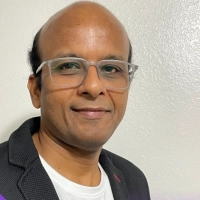11 Technologies Transforming Medical Practice Operations and Patient Care
Discover how cutting-edge technology is revolutionizing medical practices and boosting efficiency. This article dives into expert insights on adopting the latest innovations, from AI-powered tools to advanced digital assessments. Unlock the potential of these technologies to enhance patient care and streamline operations.
- Adopt Modern TMS Technology
- Leverage AI For Streamlined Workflow
- Utilize AI-Powered Virtual Agents
- Utilize Digital Movement Assessment
- Embrace AI-Powered Documentation
- Implement AI-Powered Scheduling
- Embrace Laser Dentistry
- Utilize 3D Cone Beam CT Scanning
- Integrate InBody Scanning Technology
- Utilize Secure Telehealth Platform
- Integrate Online Check-In Tools
Adopt Modern TMS Technology
We’ve adopted modern Transcranial Magnetic Stimulation (TMS) technology to create tailored treatments for depression and anxiety. By adjusting magnetic pulses to target specific brain regions linked to symptoms, we deliver sessions in just 4-20 minutes, which allows patients to return to their day immediately without anesthesia or recovery time. Over 75% of patients see significant mood improvements, and more than a third achieve full remission, offering hope for those who haven’t found relief elsewhere. It’s about balancing precision with practicality, so care fits seamlessly into lives while prioritizing safety and results.
 Dr. Bryan Bruno
Dr. Bryan Bruno
Medical Director, Mid City TMS
Leverage AI For Streamlined Workflow
To streamline documentation, we have integrated AI-powered dictation software into our EMR, allowing physical therapists to transcribe session notes quickly and accurately. This not only saves time but also ensures more detailed and comprehensive records. Additionally, we have implemented Google’s HIPAA-compliant Gemini AI to assist with various administrative and analytical tasks. This includes drafting letters of appeal, synthesizing and analyzing data, and generating well-crafted, patient- and referrer-friendly emails and documents.
By leveraging AI in these areas, we can communicate more effectively while focusing on patient care. Beyond documentation and communication, we have invested in technology that simplifies and automates many aspects of our administrative workflow. From streamlining intake paperwork and payment processing to improving provider communication, our goal is to create a seamless, user-friendly system that minimizes manual tasks and allows our team to dedicate more time to delivering high-quality care.
 Keaton Ray
Keaton Ray
COO, Co-Founder, Physical Therapist, MovementX, Inc.
Utilize AI-Powered Virtual Agents
One technological innovation that has proven profoundly impactful in the medical practices I consult with is the integration of AI-powered virtual agents, specifically designed for patient triage and pre-visit preparation.
Traditionally, medical practices dedicate significant staff time to handling routine inquiries, scheduling appointments, and gathering preliminary patient information. This leads to bottlenecks, longer wait times for patients, and clinician burnout. By implementing AI agents, we’ve automated many of these tasks, freeing up human staff to focus on more complex, patient-centric interactions.
Here’s how it translates to increased efficiency and improved patient experiences:
- Enhanced Triage: Our AI agents conduct initial symptom assessments, guiding patients to the appropriate level of care. This reduces unnecessary in-person visits and ensures patients are directed to the right specialist or resource.
- Streamlined Scheduling: The agents handle appointment scheduling, send automated reminders, and manage rescheduling, significantly reducing no-shows and optimizing clinic workflow.
- Proactive Pre-Visit Preparation: The AI agents collect essential patient information, including medical history and current medications, before the appointment. This allows clinicians to review the information in advance, leading to more efficient and personalized consultations.
- 24/7 Availability: Unlike human staff, AI agents are available around the clock, providing patients with immediate access to information and support, regardless of the time of day.
- Improved Patient Communication: AI agents can send personalized messages, answer common questions, and provide post-visit instructions, enhancing patient engagement and satisfaction.
The overall result is a more efficient practice, reduced administrative burden, and a significantly improved patient experience. Patients appreciate the convenience, speed, and personalized attention they receive, while clinicians benefit from having more time to focus on delivering quality care.
This is not about replacing human interaction; it’s about augmenting it. By automating routine tasks, we’re empowering medical practices to deliver more efficient, accessible, and patient-centered care. The AI agents becomes an enabling tool to increase the human touch, by freeing up the human resources to apply that touch more effectively.
 Howard Rosen
Howard Rosen
CEO, Nova Insights
Utilize Digital Movement Assessment
One of the most impactful technological innovations we have integrated is digital movement assessment software. With over 30 years of experience in physical therapy, I have seen firsthand how crucial accurate movement analysis is for both diagnosing issues and tracking progress. Traditional assessments rely heavily on subjective observations, but this software allows us to capture precise biomechanical data using video analysis and AI-driven insights.
This has significantly improved both the efficiency of our assessments and the quality of care we provide. Patients can see their movement patterns in real time, making it easier to understand their issues and engage with their treatment plans. By combining my expertise in musculoskeletal rehabilitation with this technology, we ensure that our patients receive highly personalized treatment programs tailored to their specific movement dysfunctions.
A great example of how this has improved patient outcomes is in our treatment of chronic lower back pain. Previously, patients often struggled to connect their pain with specific movement habits, making long-term recovery difficult. Using digital movement analysis, we can now pinpoint imbalances, muscle weaknesses, or faulty movement patterns that contribute to their pain.
I worked with a patient who had been experiencing recurring back pain despite multiple treatments elsewhere. Through video analysis, we identified subtle postural shifts during everyday movements that were aggravating his condition. With targeted corrective exercises and real-time biofeedback, he was able to make measurable improvements within weeks. This level of precision and patient engagement has transformed how we approach rehabilitation, leading to faster recoveries and better long-term results.
 Peter Hunt
Peter Hunt
Director & Physiotherapist, The Alignment Studio
Embrace AI-Powered Documentation
One of the most impactful innovations we’ve integrated into medical practice operations is AI-powered clinical documentation. We saw how much time healthcare professionals were spending on paperwork and administrative tasks, so we focused on automating that process to give them more time for patient care.
By using AI to generate clinical notes, summarize consultations, and assist with compliance, we’ve significantly reduced the documentation burden for providers. This not only increases efficiency but also improves the patient experience. Instead of being stuck behind a screen, clinicians can focus on meaningful interactions with their patients, knowing that their notes are being handled in the background.
The biggest takeaway from implementing this technology is that automation isn’t just about saving time. It’s about improving quality of care. When clinicians aren’t overwhelmed by admin work, they’re more engaged, more present, and ultimately able to deliver better healthcare outcomes.
 Jamie Frew
Jamie Frew
CEO, Carepatron
Implement AI-Powered Scheduling
One of the most impactful technological innovations I’ve integrated into medical practice operations is an AI-powered appointment scheduling and patient engagement platform. Managing appointments efficiently has always been challenging, with missed appointments and scheduling conflicts affecting both patients and providers. That’s why we turned to AI-driven scheduling to streamline the process. By automating appointment booking, sending personalized reminders, and optimizing provider availability based on patient history and urgency, this solution reduced no-shows by up to 38%.
I saw firsthand how a mid-sized primary care clinic benefited from an AI-powered chatbot for scheduling and follow-ups. They achieved a 25% increase in patient engagement and a 40% reduction in administrative workload. This accomplishment is a clear indication that it can work for all healthcare practices. With automated scheduling, digital check-ins, and AI-driven reminders, it is clear that practices can enhance efficiency, reduce administrative burden, and provide a seamless, patient-friendly experience. Simple shifts can make a real difference in how smoothly a clinic operates, and most importantly, how patients feel about their care.
 Riken Shah
Riken Shah
Founder & CEO, OSP Labs
Embrace Laser Dentistry
Laser dentistry has revolutionized pediatric dental care to a new height, where the procedures are faster, less painful, and less distressing for children. Pain is induced due to the trauma of using conventional drills and injection of anesthetics. Laser technology now renders procedures like filling cavities and frenectomies a non-painful procedure and, in a majority of situations, is administered without the requirement of anesthesia. It reduces recovery time and allows children to be back to activities without fear.
In addition to patient comfort, laser dentistry offers more precision and efficiency. Soft tissue treatment heals more rapidly with little or no bleeding, and hard tissue treatment eliminates decay with less structure loss of natural teeth. The technology also kills bacteria in treated tissues, reducing infection risk. Parents prefer efficiency and safety, and dental trips are convenient for kids as well as parents.
Efficiency is important in the case of children’s dentistry. The speedy, atraumatic treatment promotes increased compliance, reduced school absenteeism, and declining anxiety with subsequent treatment. The incorporation of leading-edge technology enables kids to have the highest quality of care with reduced stress, with favorable experience contributing to their future oral health habits.
 Dr. Jasveen Singh
Dr. Jasveen Singh
Pediatric Dentist & Owner, Pediatric Dentistry And Beyond
Utilize 3D Cone Beam CT Scanning
Some of the most important and impactful technologies that we have integrated within our practice are those related to 3D cone beam CT scanning. This technology has changed how we plan and execute implant procedures. We get detailed pictures of a patient’s mouth and jaw with CBCT, allowing us to plan with much more detail than ever before. Visualizing the full picture, from the teeth to the bones and nerves, reduces complications and ensures successful, streamlined execution.
It also helps us minimize the time taken to perform procedures. Previously, we only had traditional X-rays, which didn’t help as much with the details involved in the procedure. With CBCT, we can determine a patient’s requirements within minutes, making the whole planning process fast and accurate. Aside from streamlining our operations, we do it in less time for our patients. What you end up with is a cleaner, more effective process for them. By using this technology, we enhance the effectiveness of our treatments while creating less invasive, more comfortable experiences for patients, which is our goal in the end.
 Dr. Avi Israeli
Dr. Avi Israeli
Co-Founder and Dental Implantologist, Sage Dental NJ
Integrate InBody Scanning Technology
The tool we have integrated into our practice that has made a huge impact is InBody Scanning Technology. This system gives us a precise and in-depth look at a patient’s body composition, going far beyond just weight and BMI. It breaks down muscle mass, body fat percentage, visceral fat levels, and even hydration status. The reason this has changed our company is that it has completely transformed how we approach patient care, making our treatment plans far more personalized and effective.
Before using it, a lot of health assessments were based on general guidelines and estimations. Two patients could weigh the same, but their body compositions could differ completely. One might have high muscle mass with low fat, while the other might have a high fat percentage and low muscle. Without that data, many patients are discouraged when they didn’t see the number on the scale drop, even though they were actually making progress in other ways. Now, we can show them exactly where they are improving, whether it’s muscle gain, fat loss, or better hydration levels. This gives them a clearer picture of their progress and helps them stay consistent with their health goals.
 Ann Monis
Ann Monis
CEO & Co-Founder, Medical Anti-Aging
Utilize Secure Telehealth Platform
I integrated a secure telehealth platform into my practice, and it has transformed how we manage pain and addiction recovery. Our therapists and medical team use it extensively for remote consultations, follow-ups, and therapy sessions, making care more accessible and consistent for patients. This tool also helps streamline scheduling and monitor patient progress from home, reducing wait times and boosting engagement in treatment. Telehealth is useful, especially for those struggling with mobility, transportation, or early recovery challenges.
 Dr. Ryan Peterson
Dr. Ryan Peterson
Board Certified Physician, NuView Treatment Center
Integrate Online Check-In Tools
Integrating an online check-in tool for my patients has been incredibly powerful. Patients can fill out their patient intake forms on their own time. This decreases their time in the waiting room. This not only increases patient satisfaction, but also improves efficiency within the office.
 Nam Tran
Nam Tran
Minimally Invasive Foot Surgeon, DD Podiatry

